A Roadmap for Our Future
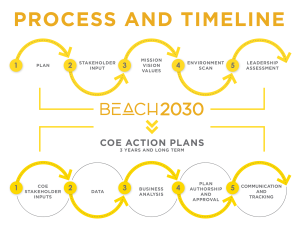
When we started this strategic planning process in Fall 2021, we had only the CSULB BEACH 2030 plan to guide us. It didn’t take long for College of Engineering faculty and staff to begin enthusiastically offering their ideas, suggestions, and feedback on areas that resonated. The discussions were kicked off during the Convocation Retreat, and continued during stakeholder meetings throughout the academic year. We elected an Action Plan Task Force to undertake analyses and form recommendations.
The COE Action Plan report that follows is the result of countless hours of research, deliberation, and consolidation. The central question we asked: What strategic directions can we set today to create the coveted graduates of tomorrow? By working together on the recommendations in this report as a college, we will increase our impact and strategy, build alignment to Beach 2030, communicate broadly to stakeholders, and guide our fundraising efforts and resource allocation.
We live in a rapidly changing world. Technology is transforming the field of engineering, the way engineering is taught, and the way work is done. The College of Engineering must expand its educational offerings and research into new high-growth and high-interest areas. We need to embrace new ways of doing things as best practices in engineering pedagogy and student support evolve, and the need for interdisciplinary collaborations and partnerships emerges. We need to create a culture where we nurture talent, capitalize on strengths, and include all. And we need to practice future-thinking to be ready for what the future may bring.
Sincere thanks to those who served on the Action Plan Task Force, as well as the team who started the ball rolling by soliciting feedback during the Convocation Retreat. As we implement these Action Plans, we will access their progress regularly, mark milestones as they are achieved, and respond to evolving needs.
Dr. Jinny Rhee
Dean, CSULB College of Engineering
Progress:
- COE will be receiving funding from an $18M grant awarded to Unite-LA to develop regional workforce pathways in applied computing. Outreach to underserved groups is a critical component of this work.
- The COE completed a climate survey and presented the results at a Town Hall meeting on November 3, 2022. The report can be requested by COE employees here.
- A Senior Exit Survey was administered in the COE in May 2022.
- Dean's Commission on Equity, Diversity, and Racial Justice resumed this fall under the leadership of ASM DeeDee Green, and a special event with Dr. Shaun Harper is scheduled for next February.
To be a truly equitable and diverse institution, we must build a compassionate community that is characterized by a strong sense of belonging and the joy of intellectual pursuits, purposeful work, and meaningful opportunities.
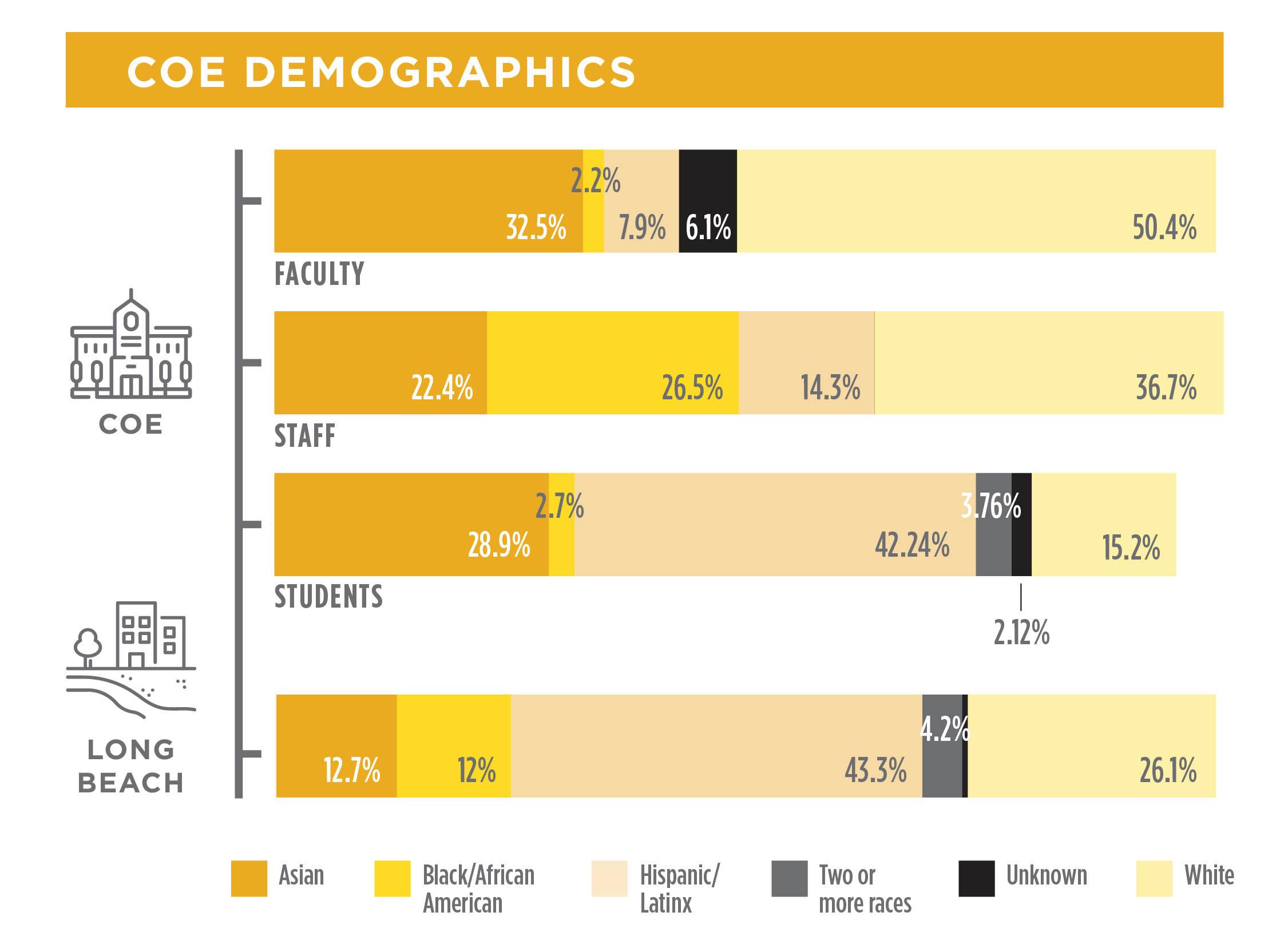
Embed Equity and Diversity into Every Aspect of College Life
Diverse teams foster creativity, innovation, and performance. Prospective students are inspired when they see people in the field who look like them and share their cultural capital. It is a moral imperative to remove barriers to the field for the historically underserved, because an engineering degree represents opportunity.
The COE must do all that we can to bring our students, staff, and faculty closer to the regional demographics that we serve, and to create an inclusive and equitable culture where all can reach their potential.
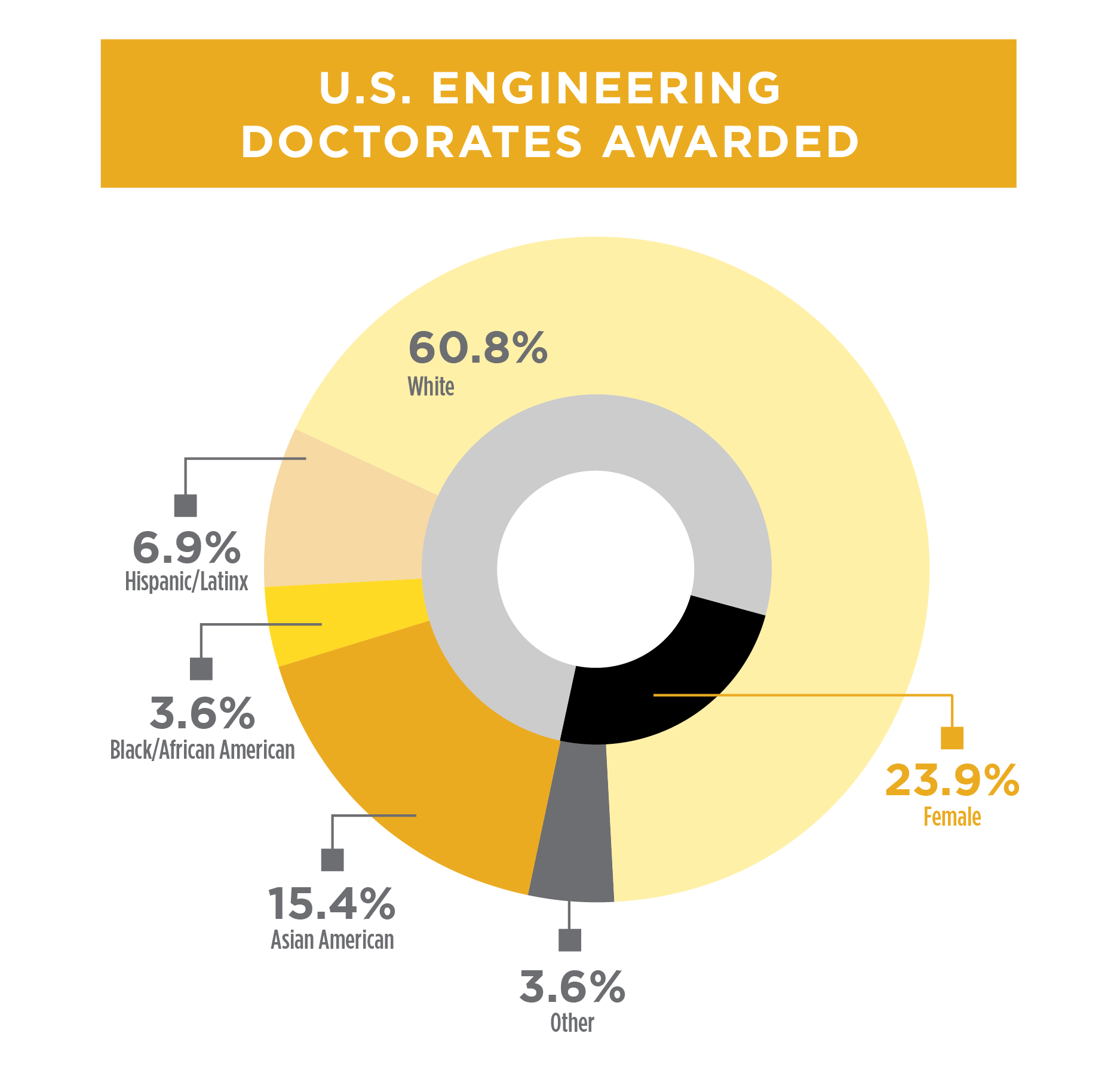
Recommended Actions:
- Perform outreach and develop curriculum to attract more women and Black/African-American students.
- Recruit women, Hispanic/Latinx, and Black/African-American faculty, and Hispanic/Latinx staff.
- Conduct annual COE climate surveys to gauge progress on inclusivity initiatives.
Remove Barriers to Success for All Students
Known barriers to engineering student success include lack of role models and mentors, uncertainty in navigating the college environment, or insufficient financial resources. Being in a minority, not having a community, or experiencing microaggressions from implicit biases can lead to feelings of not belonging in college and the field.
Recommended Actions:
- Pursue fundraising and grant opportunities to support equity and diversity efforts.
- Develop a comprehensive student success resources program, which may include: scholarships, internships, work study, research assistantships, student clubs, tutoring, and cohort programming.
- Redesign courses with largest equity gaps using responsive pedagogies and instructional design.
- Institute senior and graduate exit surveys annually to collect feedback on barriers respondents have faced and resources they have used.
Build a Compassionate and Purposeful Campus Community
Understanding and respecting each other are key to building a compassionate and purposeful community. To achieve these goals, a Community Code of Conduct, intergroup dialogue sessions, and inclusion workshops for staff and students are suggested.
Recommended Actions:
- Develop a COE Community Code of Conduct.
- Engage in facilitated intergroup dialogue with faculty and staff.
- Provide professional development opportunities on justice, equity, diversity, and inclusion for employees and students.
Progress:
- COE Committee on Academic Integrity has been elected. They will work on defining guidelines and best practices for handling cheating in the college. (E. Chae, M. Saeidi-Javash, D. Hashempour, S. Gold, S. Dastmalchi, student TBD)
- AR/VR pilot is underway, with E. Demircan and I. Khoo. They are using the VictoryXR platform and Oculus headsets to create content for BME senior project in Spring 2023.
- COE Affiliates program has launched, to fund senior design projects in the COE and to expand our industry partnerships.
As teaching and learning modalities evolve and our nontraditional learners population increases, we must ensure that our campus is ready for students, not the other way around.
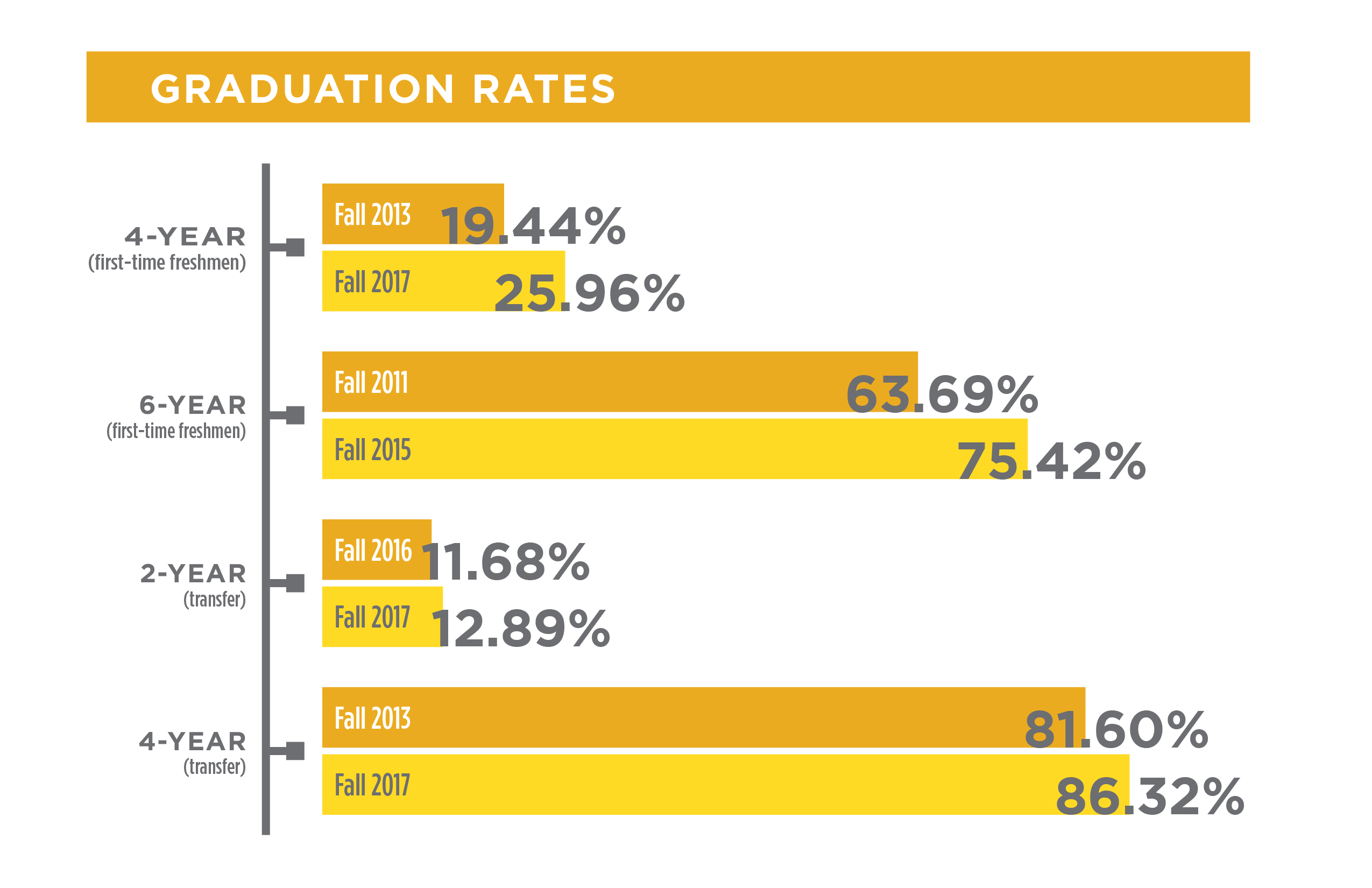
Foster a Community of Belonging for All Students
Incoming high school and community college students would receive an introduction to the COE through Semester Zero programs. Guided Pathways would streamline all students’ paths to graduation and reduce taking unnecessary units. Four-year graduation rates for engineering freshmen remain low, and the average number of units at graduation is well above the required 120 units.
Similarly, Transfer Pathways established with community college feeders would provide roadmaps for transfer students, and potentially increase two-year graduation rates that are low due to incomplete lower-division prerequisites. Concurrent enrollment options would be created to backfill those lower-division requirements.
Expanding Cohort Learning Models, such as the Beach Engineering Student Success Team (BESST), would also foster a community of belonging. BESST consistently boasts high first-year calculus completion rates, a predictor of success in COE programs.
Recommended Actions:
- Adopt Semester Zero programs to effectively transition high school and community college students to university learning.
- Establish Guided Pathways for all degree programs.
- Establish Transfer Pathways with community college feeders, and concurrent enrollment options.
- Expand Cohort Learning Models, such as the Beach Engineering Student Success Team (BESST) program.
Prioritize Student Health and Well-being
According to faculty and student feedback, cheating in the college was exacerbated by the pandemic. At the same time, some cheating penalties have resulted in extreme and widespread student distress. Adopting an Engineering Code of Ethics, instilling professional norms, and revising college academic dishonesty guidelines have been recommended to clarify commonly accepted practices and reduce student anxiety over grades.
Recommended Actions:
- Adopt an Engineering Code of Ethics and instill professional norms for integrity, representation of work, and commitment to public safety.
- Revise the college’s academic dishonesty guidelines to clarify commonly accepted practices and reduce student anxiety over grades.
Connect Learning to the Future of Work
The COE has a reputation for providing hands-on learning opportunities and creating graduates ready to hit the ground running. The recommended actions below will offer High-impact Practices (HIPs) to connect learning to the future of work. An Internship Initiative will extend a paid internship experience to all COE students. AR/VR facilities and equipment will be leveraged to incorporate the new technologies into the curriculum. And enhanced project-based learning opportunities will be provided.
Recommended Actions:
- Adopt an Internship Initiative, offering a paid internship experience to all COE students.
- Utilize AR/VR in COE Curriculum to increase learning, engagement, and inclusivity.
- Enhance and increase project-based learning to create job-ready engineering graduates.
Progress:
-
Professor of Practice has been hired in the CECEM Department. (Dr. M. Youssef, Beavers Professor of Practice, specializing in Heavy Civil Construction).
-
Revision to the COE RTP policies is underway.
-
Joint faculty search is underway for a Fall 2023 start. (CECS/BME joint hire in bio-informatics)
By aligning faculty work, evaluation, and rewards, we allow faculty greater career autonomy, create incentives for interdisciplinary collaboration, and create opportunities to solve grand societal challenges.
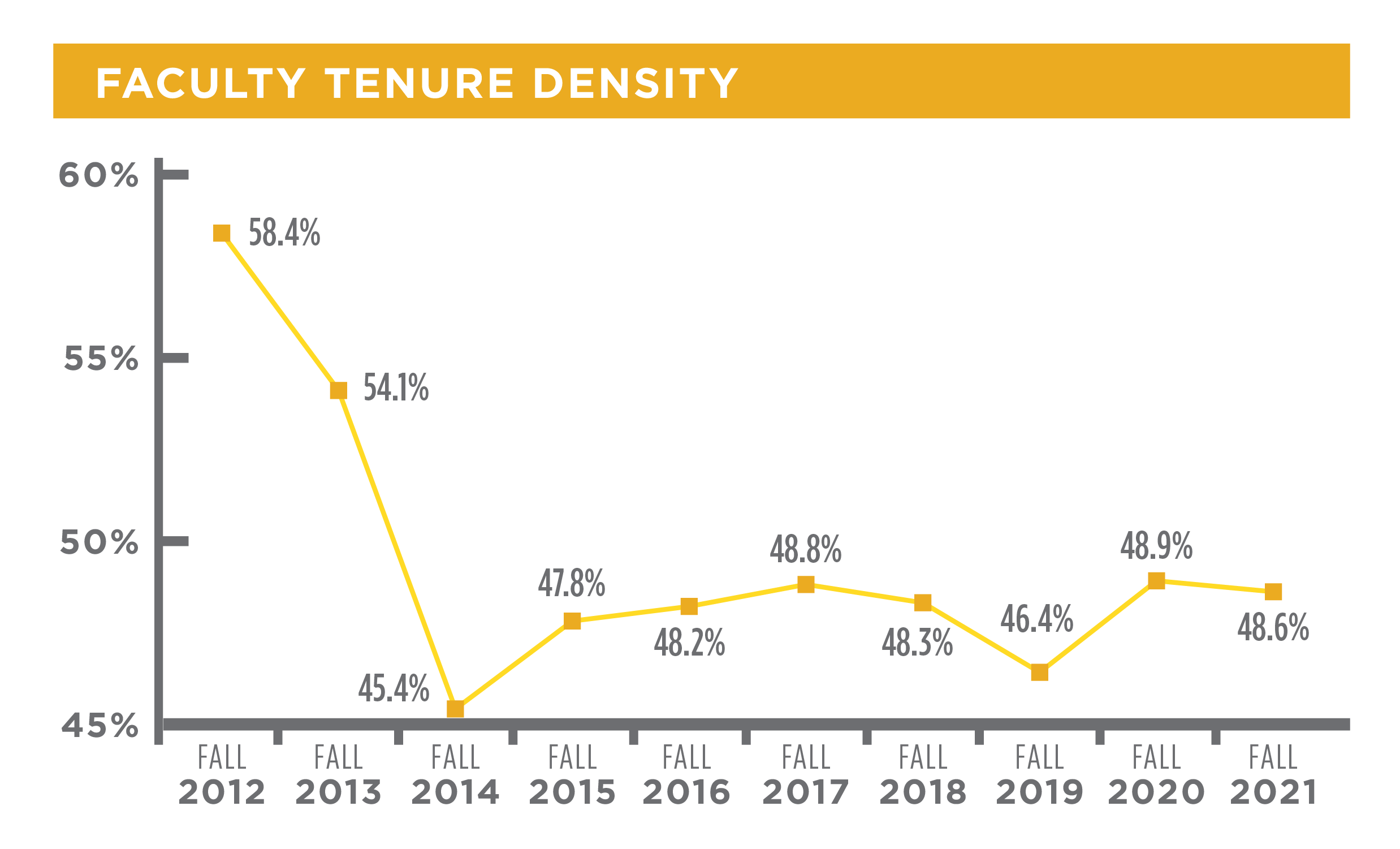
Expand Faculty Lines
Creating new types of faculty categories that bolster application and innovation in our field will enhance student education and attract faculty with unique expertise to strengthen the COE’s mission. Expanding faculty lines could also help remedy the COE’s low tenure density compared to the prior decade.
Faculty of Practice exist at some universities, and are typically distinguished professionals with a decade or more of experience in the field. They oversee courses and programs that capitalize on their industry knowledge and connections. Research Faculty also exist at some universities, and are typically research specialists assigned little to no teaching. The new faculty categories would complement the core contributions of the tenure line and lecturer faculty.
Recommended Actions:
- Establish a Faculty of Practice category to allow students to learn state-of-the-art industry practice from distinguished professionals.
- Establish a Research Faculty category to increase opportunities for student research and faculty collaboration to tackle grand challenges faced by society.
Align Faculty Work, Evaluation, and Rewards
The Retention, Tenure, and Promotion (RTP) policies in the COE are in need of alignment to Beach 2030 and our strategic vision. They should reward interdisciplinary collaborations and work on grand challenges.
They should allow for differential emphasis on teaching, research, and service to leverage individual faculty strengths. They should increase transparency on review criteria and expectations for all levels of review. The COE RTP Policy Task Force has initiated this important project and we will build upon their good work.
Recommended Actions:
- Revise college and department RTP policies to provide common guidelines throughout COE and rewards for faculty achievements and interdisciplinary collaborations.
Reimagine Department and College Structures
Traditional college organizations form departments grouped by disciplines and majors. While this organization is logical and efficient, it can be criticized for being territorial and siloed. As new fields emerge and society’s grand challenges become increasingly multidisciplinary, department and college structures need to cultivate and stimulate the interdisciplinarity that will allow us to evolve and remain current.
Recommended Actions:
- Identify multidisciplinary faculty cluster areas for future hiring.
- Establish policy on joint appointments that builds upon prior experience and best practices.
- Move towards a shared, interdisciplinary research laboratory model to foster collaboration, mentorship, and shared resources, and to leverage the square footage available to the college.
Progress:
-
Draft telecommuting policy is in review.
-
Staff expressed desire to have a Staff Appreciation Lunch 1x/semester in lieu of an Outstanding Staff Award at the all-staff meeting on 11/28/22.
By refining policies and infrastructure for alternative work formats and professional development, we will positively influence staff morale, improve work/life balance, improve cost efficiency and productivity, and attract talented, diverse candidates.
Align Staff for the Future of Work
The pandemic forced a majority of the university’s staff members to work from home for nearly two years. During that span, COE and university staff developed online processes and used online conference tools to effectively perform their duties and serve their constituents remotely. A return to on-campus learning required a large portion of COE staff to also return to campus to serve the students’ and organization’s needs.
However, in recognition of the resulting paradigm shift in workplace habits, COE will explore telecommuting and hoteling for certain staff. In the interest of achieving increased efficiencies, COE will also implement a ticketing system to track IT and facilities work requests.
Recommended Actions:
- Explore telecommuting and hoteling for certain staff, as appropriate to maintain the college mission.
- Implement a ticketing system to track IT and facilities work requests to increase efficiency and transparency.
Enhance Pathways for Personal and Professional Achievements
When state budgets were slashed, funds for staff professional development became scarce. Previously, a large number of COE administrative staff attended the CSU Academic Resources Conference to share information with colleagues and learn about the latest policy and procedures changes. However, that number declined as budgets became lean. A dedicated Staff Professional Development Fund would serve as an important first step in creating a culture of continual learning. Staff members could apply for funds to take a course or attend a conference. Acquiring new skills could also potentially lead to staff obtaining higher positions. Increased opportunities for professional development and promotion were among the staff suggestions during COE’s Fall Convocation Retreat.
Recommended Actions:
- Establish a Staff Professional Development Fund for conferences and training.
- Establish an Outstanding College of Engineering Staff Award.
- Work with COE/campus/unions on salary increases, bonuses, stipends, and a staff early-retirement program.
Design a Culture of Collaboration and Community
The university conducts extensive orientation meetings for new employees, however COE has not adopted a formal onboarding process for new staff and student assistants. In addition, there is no central repository for processes, policies and resources information needed to function effectively within the COE. Effectively communicating important information to new employees would boost collaboration and efficiency and create a sense of community. There is also potential for technical staff to benefit from collaboration. A spring Staff Social will further reinforce connections between employees.
Recommended Actions:
- Increase transparency and communication of processes, policies, and resources.
- Create an onboarding process to orient new employees and assistants when they join our community.
- Explore ways to improve collaboration among technical staff.
- Hold a spring Staff Social to encourage interaction in a more relaxed and fun environment.
Progress:
-
AR/VR pilot is underway, with E. Demircan and I. Khoo. They are using the VictoryXR platform and Oculus headsets to create content for BME senior project in Spring 2023.
-
AVEP Retreat was held on 7/29/22 with stakeholders to brainstorm future of program. Continuing discussions in progress.
As student needs evolve, we must grow our capacity to offer new programs in new modalities and new locations to ensure that CSULB is relevant, competitive, and serving the public good.
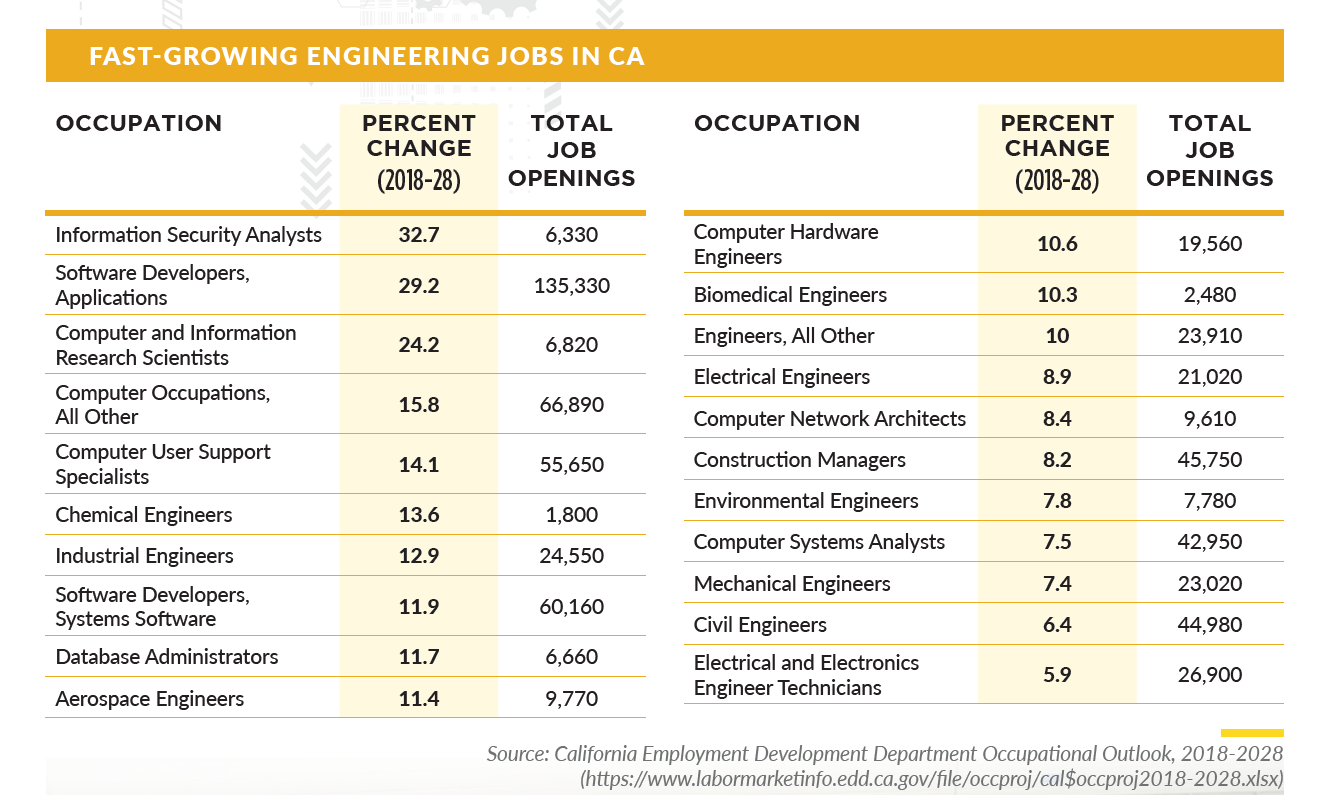
Grow Self-Supported Curricular Offerings
State funding for the California State University system fluctuates, and adopting new programs within the state-supported system can be a lengthy and cumbersome process. Self-supporting programs offered by the CSULB College of Professional and Continuing Education (CPaCE) provide an alternative. CPaCE is more nimble at creating new course programs, allowing students to secure education that they can quickly apply in emerging or cutting-edge technical areas. To ensure that new curricular offerings are successful, they should be centered around engineering occupations that exhibit strong projected job growth in the next decade, demand from both students and industry, and financial support from donors, grants, or companies.
Recommended Actions:
- Identify engineering educational programs that have strong projected job growth in the next decade, in addition to student and industry demand, and financial support.
Expand Alternative Instructional Delivery Infrastructure
With a growing inventory of AR/VR facilities and equipment, as well as substantial faculty expertise, COE is poised to further develop its AR/VR capabilities with the creation of a dedicated AR/VR lab. AR/VR has the potential for developing new and more impactful techniques for teaching engineering and STEM concepts. Beyond serving as an effective vehicle to convey complex concepts and provide immersive hands-on experiences, AR/VR can extend engineering education to students with a broad range of learning styles and disabilities.
Recommended Actions:
- Integrate AR/VR into COE Curriculum (joint with Student-Ready University).
Develop Capacity to Offer Programs Off Campus
Extending educational offerings beyond campus physical boundaries is an avenue many institutions are taking to reach new audiences of students. Within COE, the Antelope Valley Engineering Program currently serves as a potential model. The accredited degree-completion program for electrical engineering and mechanical engineering students is operated in partnership with CPaCE, and the program is supported by potential
employers such as the U.S. Air Force and Northrop Grumman. Courses are offered at Lancaster University.
Although in operation for nearly a decade, the program is still not self-supporting. Evaluating how to make AVEP sustainable would serve as an important step in developing the capacity to offer other off-campus programs.
Recommended Actions:
- Evaluate satellite Antelope Valley Engineering Program, and consider ways to make the degree-completion program self-supporting and sustainable.
Progress:
- COE Affiliates program has launched, to fund senior design projects in the COE and to expand our industry partnerships.
- Three new industry leaders have joined the College of Engineering Dean’s Advisory Council, expanding further into the automotive, construction, and power sectors. The new members are Susan Brennan, President and CEO of Romeo Power; Mike Guidry, Director of Engineering at DENSO Products and Services Americas Inc.; and Mary Teichert, President of Teichert Inc.
CSULB’s robust portfolio of public, private, government, and nonprofit partnerships is one of our greatest assets, and a strategic partnership structure will advance our public mission while strengthening our institutional priorities
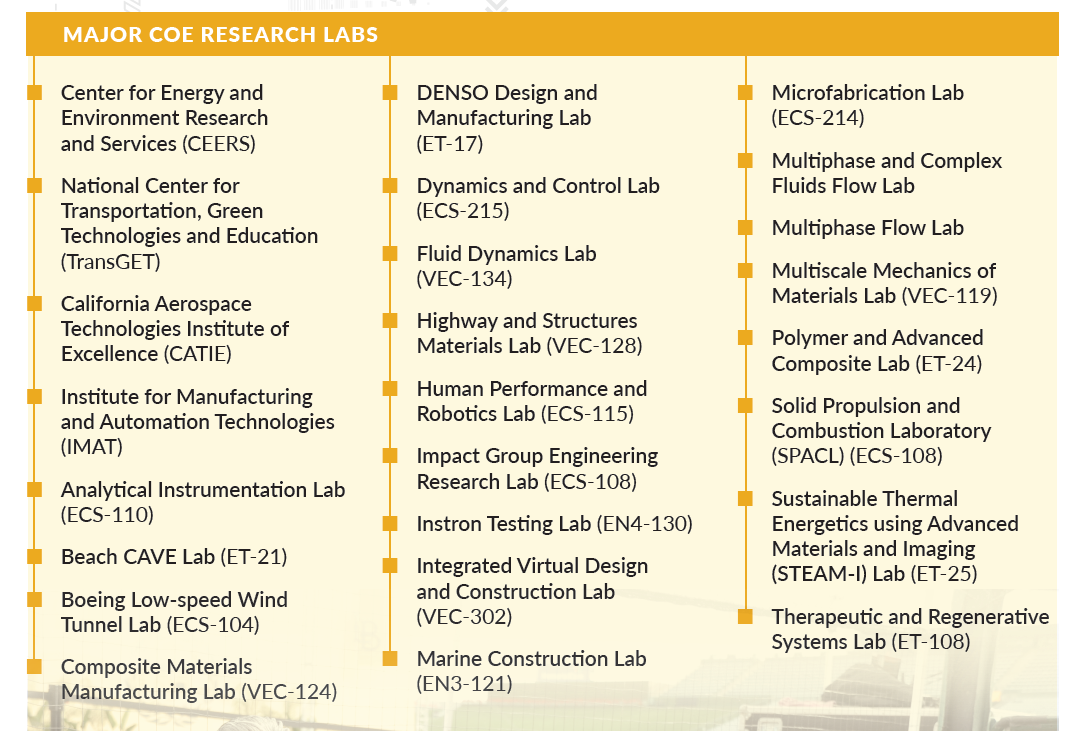
Promote CSULB’s Intellectual Capital to Benefit the Community and Region
Industry partners currently have many avenues for accessing COE’s intellectual capital, supporting student and faculty projects, and enlisting faculty and student assistance on technical issues and problems. However, these opportunities are often ad-hoc, and managed by a range of COE players with undetermined results.
An Industry Affiliates Program (IAP) would offer a clear gateway for companies and regional partners to explore broad research and project areas of common interest. An IAP would also provide a mechanism for creating dialogue between industry and academia. Having a clear and efficient process in place would allow industry partners to support student and faculty research and senior design projects, access resources in COE’s more than 100 labs, and secure assistance with technical issues.
Supported by annual memberships, IAPs have proven effective at major universities in creating dialogue between industry and academia. IAPs allow industry to gain access to faculty and student expertise and facilities without having to pay overhead.
Recommended Actions:
- Create a COE Industry Affiliates Program to fund and disseminate COE research and student projects.

Leverage Community Partner Expertise to Advance CSULB’s Institutional Mission and Strategic Priorities
Demand for graduates in various engineering fields fluctuates as new technologies are harnessed to solve world problems. To keep our engineering curriculum cutting-edge, it’s imperative that COE enlist advice from representatives from a wide range of industries. It’s equally imperative that COE expand its Dean’s Advisory Council and Department Advisory Boards to enlist representatives from emerging fields. Such actions will ensure that the council and boards remain relevant for guiding actions and curriculum.
COE also needs to leverage key partnerships to secure naming opportunities for COE and its programs, facilities, and awards. Securing naming opportunities, a practice in place at many major universities, would advance relationships with important community partners and further COE’s institutional mission and strategic priorities.
Recommended Actions:
- Expand the Dean’s Advisory Council and Department Advisory Boards to match anticipated growth areas.
- Secure endowment and naming opportunities for the COE and its programs, facilities, scholarships, and awards.
Progress:
- The College will be holding a 2-day retreat on Jan. 10-11, 2023 to provide training in Futures Thinking.
In preparation for BEACH 2030, thousands of staff, faculty, students, and community members were introduced to “Futures Thinking.” The enthusiasm generated from this collective process is the fuel that will maintain momentum into the decade.
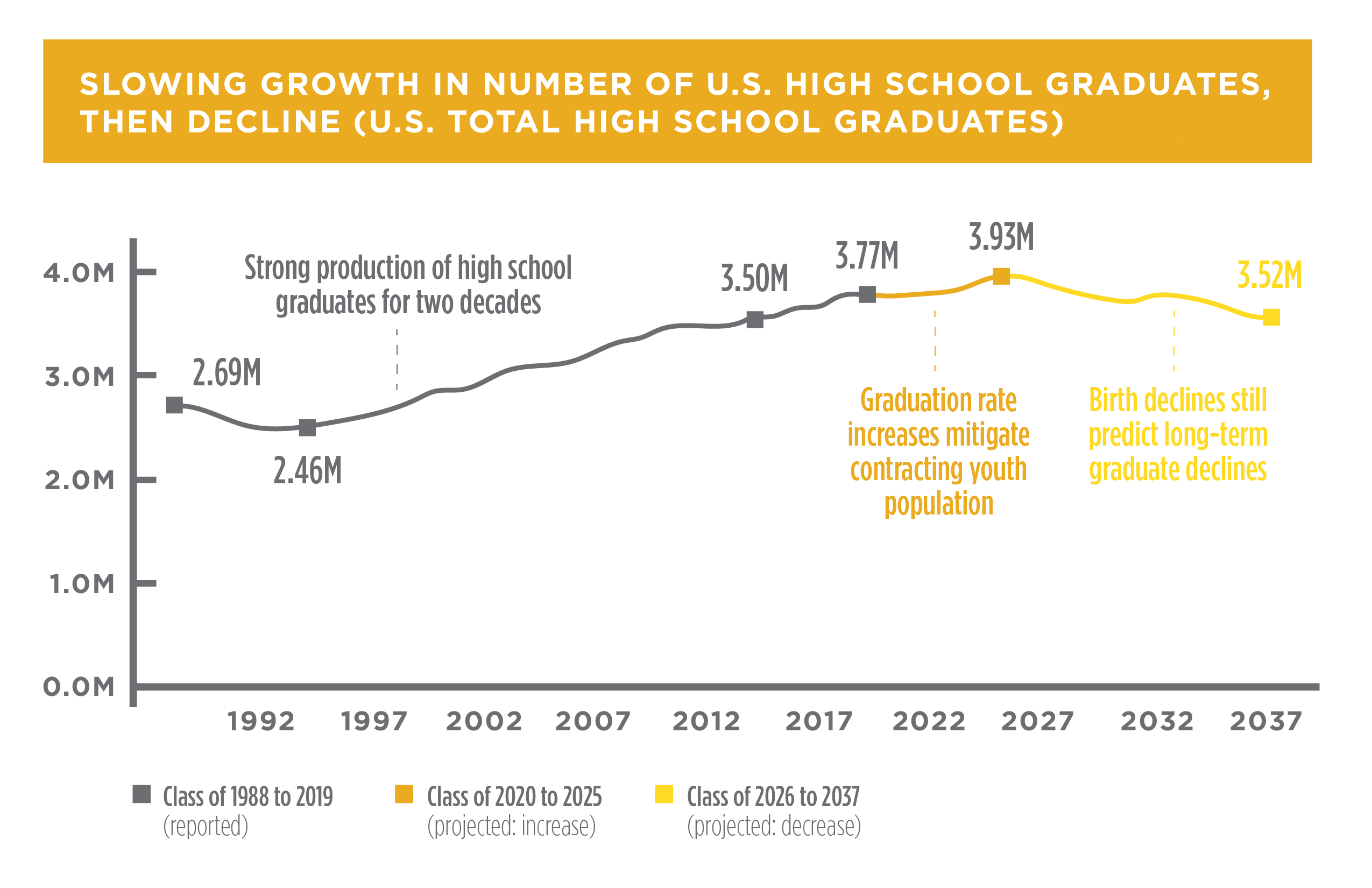
Integrate Futures Thinking into Organizational Culture
Faculty, staff, and members of the COE Action Plan Task Force have had the opportunity to practice “futures thinking” as part of the BEACH 2030 strategic planning process, which began in 2018 and continues to this day. Imagining the issues and opportunities facing COE in 2030 has proven an interesting exercise in evaluating data and extrapolating the results from changing demographics and technological advances.
The goals for COE’s Beach 2030 Action Plans have been established, and will be communicated via printed report, webpage, and Action Plan Task Force presentations during COE’s Fall 2022 Convocation Retreat. The achievement of milestones for these goals will be communicated to stakeholders as they are reached.
Recommended Actions:
- Develop goals and milestones for Beach 2030 Action Plans.
- Communicate and celebrate Beach 2030 actions and outcomes to all stakeholders.
Develop COE’s Capacity for Strategic Foresight
CSULB officials have developed “future-thinking” training, and some university personnel have received it. COE would like to take advantage of the university training for college leadership and student organization leaders to develop COE’s capacity for strategic foresight.
Recommended Actions:
- Obtain CSULB futures-thinking training for college leadership and the heads of student organizations.
- Evaluate incorporating futures thinking into new or existing curricula for students.
Future Considerations for COE
Amid changing demographics and declining high school graduates, the COE will likely need to compete more strongly for future students over the next decade. There will be a 15 percent drop in the college-age population between 2025-2029 in California and the United States. In addition, some students are questioning whether the value of a degree is worth the cost. Although applications for our programs remain high, the admissions yield rate has been decreasing. These are all signs that we must ensure timely and excellent programs, invest in outreach to groups that have been historically underserved in the COE, and articulate the power that comes with a degree from our programs. At the same time, artificial intelligence (AI) and the rise of the metaverse are poised to radically alter the job market. The metaverse, which is forecast to grow to a $12.46 trillion market by 2030, is expected to spur demand for new types of engineers, such as those with experience in AR/VR, UI/UX, blockchain, and security.
According to a report by PriceWaterhouseCoopers, education may provide a modest hedge against AI job losses. AI will result in the elimination of up to 50 percent of jobs held by those with low levels of education, but only 10 percent of jobs held by those with high levels of education, according to PwC.
General
- COE Convocation Retreat – Beach 2030 Action Plans, Aug. 19, 2021. Action Zone Moderators: Sergio Mendez, Antonella Sciortino, Daniel Whistler, DeeDee Green, Hamid Rahai, Nicole Forrest Boggs, Dan O’Conner
- COE Dean’s Listening Tour, July 14-Sep. 15, 2021
- COE Town Hall, Dean’s Notes, Oct. 28, 2021
- 2022 Survey of COE Dean’s Advisory Council – CSULB College of Engineering Strategic Planning and Other Input
- CSULB Beach 2030
Build an Equitable and Empowering Culture
- U.S. Student and Ph.D. Recipient Demographics, American Society of Engineering Education, By the Numbers 2020
- COE Faculty Demographics, CSULB Institutional Research Analytics
- COE Student Demographics, CSULB Institutional Research Analytics
- COE Student Population, At a Glance, CSULB Institutional Research Analytics
- Which Courses Have the Largest GPA Equity Gaps? CSULB Institutional Research Analytics
Be a Student-Ready University
- Student Graduation Rates, CSULB Institutional Research Analytics
- Engineering the BEACH Metaverse, CSULB College of Engineering
Reimagine Faculty
- Tenure Density, CSULB Institutional Research Analytics
Reimagine Staff
- College of Engineering Reimagine Staff Survey, Spring 2022
Build a Growth Strategy
- California Employment Development Department Occupational Forecasts
- Current State of Research in Application of Disruptive Technologies in Engineering Education
- Demand for Engineers with Niche Skills Spikes as Firms Bet Big on the Metaverse
- Employment Projections, U.S. Bureau of Labor Statistics
Be a Future-Ready University
- CSULB Yield Rates, CSULB Institutional Research Analytics
- Engineering the BEACH Metaverse
- Metaverse and Money: Decrypting the Future
- Metaverse Market Size, Share, and Trends, 2022-2030
- Project-based Learning and Augmented Reality
- The Metaverse: Quantum Labor Analysis Report
- Traditional Student Population Will Fall 15% Over the Next Decade
- What Makes HIPs So Effective?
- Will Robots Really Steal Our Jobs? An International Analysis of the Potential Long-term Impact of Automation
- Youth and Emerging Adults Strategic Plan





